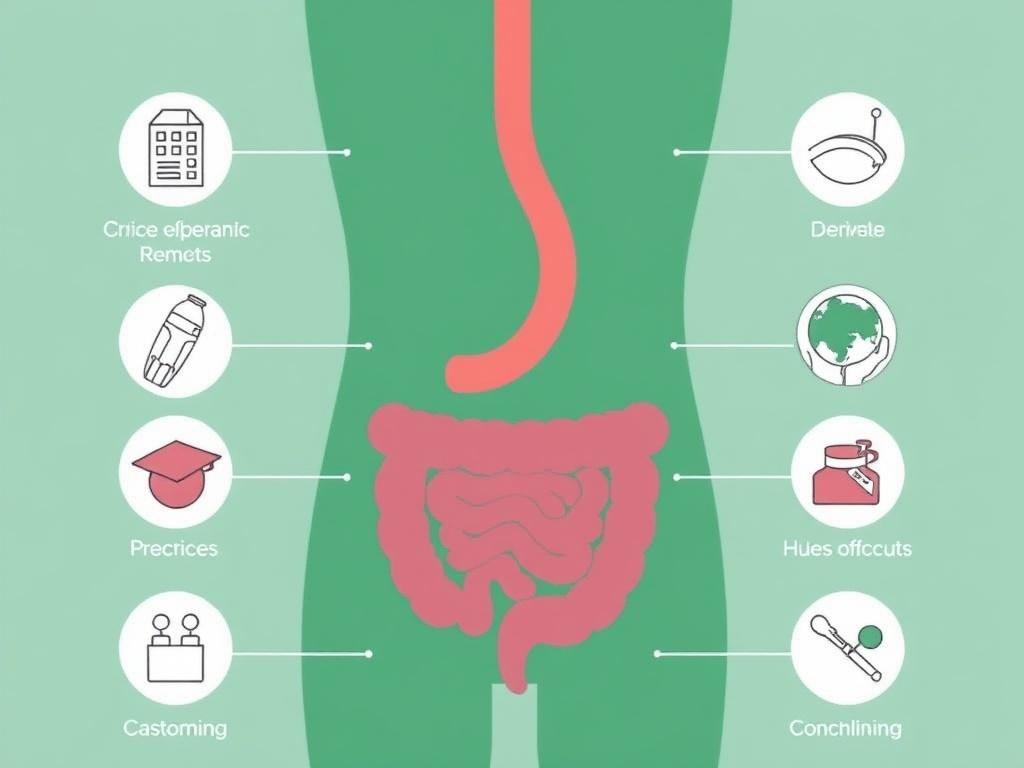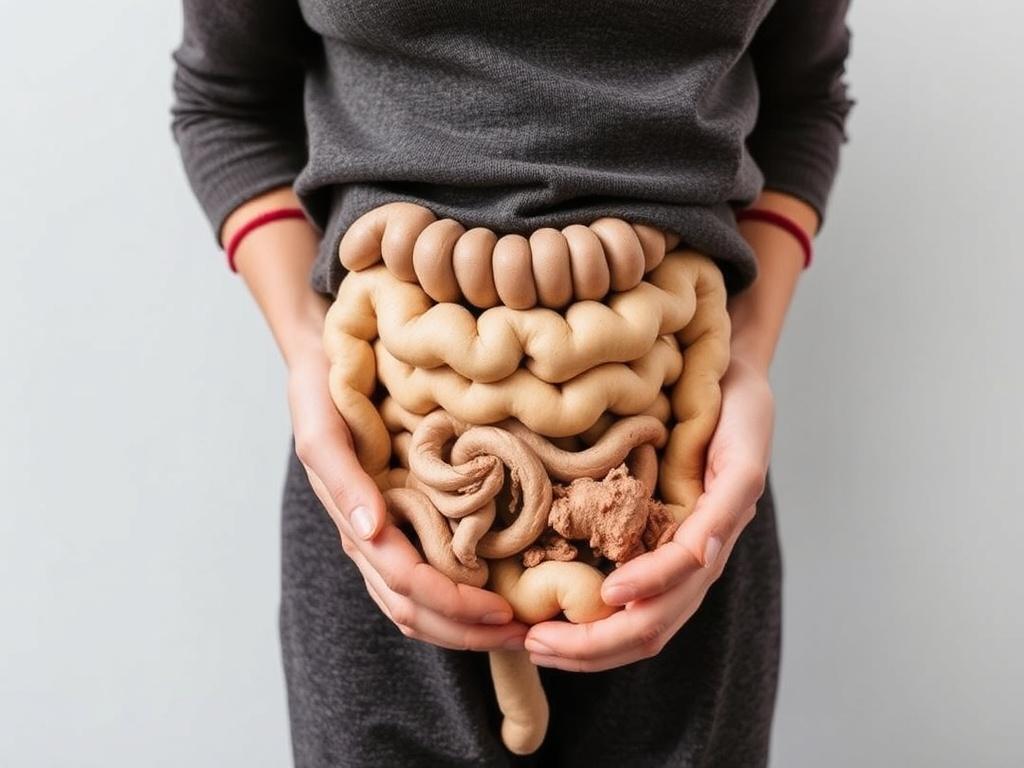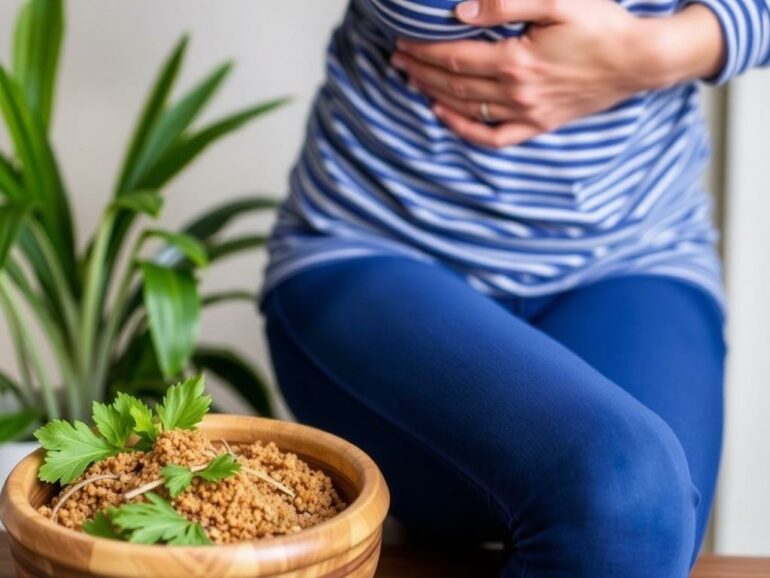Chronic constipation can feel like a private, persistent annoyance that slowly takes up space in your life. It isn’t just about fewer trips to the bathroom; it affects energy, mood, sleep, and even social life. Whether you’ve been dealing with this for months or years, you’re not alone—and you don’t have to rely on harsh, long-term medications to feel better. This article will walk you through what chronic constipation really is, why it happens, when to seek medical help, and practical, natural strategies to manage and often resolve it. Expect clear, friendly guidance, backed by common-sense steps that you can start using today.
I’ll speak plainly and step-by-step: we’ll cover the causes and how to tell if yours is functional (most common) or something that needs urgent attention; then we’ll dive into nutrition, fluids, movement, natural supplements, behavioral changes, and targeted therapies like pelvic-floor retraining. You’ll find easy-to-follow tips, recipes, a sample daily plan, and a comparison table of natural options so you can pick what suits you. Keep reading—small changes, combined thoughtfully, can make a big difference.
What is chronic constipation?
Chronic constipation means having difficult or infrequent bowel movements for weeks to months. Common definitions use frequency (fewer than three bowel movements per week) or the quality of stools—straining, hard stools, incomplete evacuation, or reliance on laxatives. Chronic implies persistence: symptoms lasting three months or more. It’s important to understand that constipation isn’t a single disease; it’s a symptom with many possible causes.
Most cases are “functional constipation,” meaning the colon and nerves aren’t seriously diseased but are not moving stool as efficiently as they should. Other causes include medication side effects, metabolic conditions (like hypothyroidism), neurological problems, structural blockages, or pelvic-floor dysfunction. Lifestyle, diet, and stress play big roles.
Signs, symptoms, and red flags

You’ll know constipation by common signs: hard, lumpy stools; straining; a feeling of incomplete emptying; needing abdominal pressure to pass stool; or infrequent bowel movements. If you occasionally get constipated, lifestyle fixes usually help. But watch for red flags that need prompt medical evaluation:
- Blood in the stool or black/tarry stools
- Unexplained weight loss
- Severe abdominal pain, vomiting, or inability to pass gas
- Onset of constipation after age 50 with a sudden change in bowel habits
- Family history of colon cancer or inflammatory bowel disease
- Neurological symptoms like numbness, weakness, or urinary retention
If any of these occur, contact a healthcare professional. For chronic, non-urgent constipation, you can still try natural measures while keeping in touch with your clinician.
How the gut normally moves and where it can slow down

Understanding the basics helps: your colon absorbs water from stool and moves waste along with coordinated muscle contractions called peristalsis. When transit is slow, stool becomes firmer and harder to pass. Causes include low fiber or fluid intake, sedentary behavior, certain medications, hormonal slow-down (like hypothyroidism), dehydration, and pelvic-floor problems where muscles don’t relax to let stool pass (dyssynergia). Stress and changes in routine can also slow motility.
First-line natural strategies: diet, fiber, and fluids
Diet and hydration are the foundation. Most people with constipation benefit from increasing fiber, but it must be done right—too much fiber without adequate water can worsen symptoms.
Understand soluble vs insoluble fiber
| Fiber Type | How it works | Common Foods | Typical effect on stool |
|---|---|---|---|
| Soluble fiber | Absorbs water, forms gel, softens stool | Oats, beans, psyllium, apples, carrots | Softens and can increase stool bulk |
| Insoluble fiber | Adds bulk, speeds transit | Whole grains, wheat bran, vegetables, nuts | Speeds passage, but can feel rough if dehydrated |
Aim for a gradual increase to 25–35 grams of total fiber daily for most adults. If you’ve been eating very little fiber, increase slowly over 2–4 weeks to reduce gas and bloating.
Practical fiber-rich foods and swaps
- Start the day with oat porridge or high-fiber cereal (look for 5+ g fiber per serving).
- Add a cup of beans or lentils to a salad or soup several times per week.
- Swap refined grains for whole grains: brown rice, quinoa, whole-wheat bread.
- Snack on fruit (prunes, pears, apples with skin) and raw vegetables.
- Include nuts and seeds (flaxseeds ground, chia seeds) for extra fiber and healthy fats.
Hydration matters
Water helps fiber work. A good rule: increase daily fluids—aim for at least 1.5 to 2 liters of fluid per day as a baseline, more if you’re active or it’s hot. Warm fluids in the morning can stimulate the bowel. Avoid excessive caffeine or alcohol—they can dehydrate some people.
Natural supplements and remedies with evidence
If diet alone isn’t enough, some natural supplements have good evidence.
| Remedy | How it helps | Evidence/notes |
|---|---|---|
| Psyllium (ispaghula husk) | Bulk-forming soluble fiber; softens stool | Well-studied and effective; start low, mix with water |
| Prunes (dried plums) | Contains fiber and sorbitol (osmotic laxative) | Several trials show benefit; 50–100 g/day may help |
| Magnesium (oxide or citrate) | Osmotic effect draws water into bowel | Helpful at low doses (e.g., 200–400 mg); consult provider if on heart meds or kidney disease |
| Probiotics (some strains) | Alter gut flora; may speed transit | B. lactis and some multi-strain products show modest benefit |
| Senna, cascara | Stimulant laxatives—stimulate bowel contractions | Effective short-term but not recommended long-term without medical advice |
Note: Always discuss supplements with a healthcare provider if you are pregnant, breastfeeding, have kidney disease, heart disease, or take medications. Magnesium can interact with some drugs and accumulate with kidney impairment.
How to introduce psyllium and other fiber supplements
Start with a low dose (e.g., one teaspoon of psyllium in a glass of water once daily) and increase over a week to the recommended dose on the product (often 1–2 tablespoons per day split into doses). Drink extra water when taking bulk fibers. If bloating or gas increases, slow the increase.
Lifestyle changes: movement, timing, and posture
Moving your body stimulates the gut. You don’t need marathon training; consistent moderate activity helps.
Exercise that helps
- Daily brisk walking for 20–30 minutes can improve transit time.
- Core-strengthening and yoga poses (wind-relieving pose, gentle twists) can support bowel movement.
- Pelvic-floor exercises and relaxation techniques can help if muscles are not coordinating properly.
| Exercise | Why it helps |
|---|---|
| Walking | Stimulates intestinal contractions and reduces transit time |
| Yoga twists | Encourages abdominal massage and gentle movement of the colon |
| Squats or sitting on a low stool | Improves anorectal angle for easier passage |
Create a bathroom routine
Habit and timing matter. Many people find a predictable morning routine helps: after waking and a warm drink, sit on the toilet for 10–15 minutes—don’t strain, and allow the gastrocolic reflex (the body’s natural urge after eating) to work. If you often ignore the urge, retraining helps restore normal signals.
Consider using a small stool to raise knees above hips when seated; this mimics a squatting position and eases passing stool.
Pelvic floor and biofeedback: when the body gets in the way
Some chronic constipation results from pelvic-floor dyssynergia—where the muscles that should relax to let stool pass instead tighten. Symptoms can include straining, feeling of blockage, needing to use fingers to assist passage, or long-standing symptoms unresponsive to fiber.
Biofeedback therapy with a trained physiotherapist can retrain these muscles and shows good success rates. If your doctor suspects this condition, they may refer you for testing (anorectal manometry) and therapy.
Herbal remedies and what to watch for
Herbs like senna and cascara are effective stimulant laxatives but are best used short-term: they can cause cramping and, with overuse, dependence. Licorice, aloe vera, and others are sometimes used but come with potential side effects; aloe can cause electrolyte imbalance if used frequently.
Natural does not mean risk-free—check interactions and avoid prolonged use of stimulant herbs without medical supervision.
Mind-gut connection: stress, sleep, and routine
Stress slows digestion for many people. Techniques that reduce stress—mindfulness, gentle exercise, adequate sleep, deep-breathing exercises—can improve gut function. Try a simple 5-minute morning breathing routine or progressive muscle relaxation in the evening as part of a consistent sleep schedule.
Medications and medical causes—what to review with your doctor
Many medications can cause or worsen constipation: opioids, many antidepressants (especially those with anticholinergic effects), antacids with aluminum, iron supplements, some antihypertensives, and antipsychotics. If constipation started or worsened after a medication change, discuss alternatives with your provider.
Other medical issues to consider include hypothyroidism, diabetes with autonomic neuropathy, neurological conditions (Parkinson’s), and structural problems like strictures. Tests may include blood tests, thyroid function, colonoscopy (if indicated), or functional studies.
Special groups: pregnancy, older adults, and children
Pregnancy: Hormonal changes and the pressure of the growing uterus can cause constipation. Safe approaches include increased fiber, fluids, gentle exercise, stool softeners like docusate (after checking with your provider), and prunes. Avoid some herbal laxatives—or use only with obstetric guidance.
Older adults: Constipation is common and often due to reduced activity, medications, low fluid/fiber intake, and changes in bowel physiology. A cautious approach with fiber, hydration, physical activity, and reviewing medications is key. Be careful with magnesium and stimulant laxatives in frail or kidney-impaired elders.
Children: Offer fiber-rich foods, good fluid intake, and regular toilet routines after meals. Avoid punitive approaches and consult pediatric guidance for dosing of fiber supplements or prunes.
Step-by-step abdominal self-massage

Abdominal massage can stimulate the colon gently. Here’s a simple, safe routine to try:
- Lie on your back with knees bent and feet flat on the floor.
- Apply gentle pressure with your fingertips over the lower right abdomen (start where the small intestine meets the colon).
- Make circular motions, slowly moving up toward the ribs, across the upper abdomen, then down the left side toward the pelvis—following the path of the colon.
- Repeat for 5–10 minutes, using comfortable pressure and breathing steadily.
Do this after a warm shower or with a warm compress to relax muscles, and avoid if you have abdominal pain of unknown cause.
Sample one-day plan to try
Below is a practical daily blueprint using natural measures combined together. Modify to taste and medical needs.
| Time | Action |
|---|---|
| Upon waking | Drink 250–350 mL warm water or herbal tea. Gentle stretching or 10-minute walk. |
| Breakfast | Oats with ground flaxseed, a sliced pear (with skin), and a handful of prunes or raisins. |
| Mid-morning | Glass of water. Optional probiotic yogurt or fermented drink. |
| Lunch | Large salad with mixed greens, chickpeas, quinoa, and olive oil; wholegrain roll. |
| Afternoon | Short walk; snack of raw veggies or an apple. Hydration. |
| Dinner | Steamed vegetables, brown rice or sweet potato, lean protein; a small salad. |
| Evening | Warm herbal tea. Gentle yoga or pelvic-floor relaxation. Sit on the toilet for 10 minutes about 20–30 minutes after dinner if you can. |
Foods that commonly help or hurt
- Helpful foods: prunes, pears, apples (with skin), beans and lentils, oats, psyllium, chia, ground flaxseeds, whole grains, vegetables (broccoli, carrots), olive oil.
- Foods that may worsen constipation: excessive dairy for some people, large amounts of red meat, highly processed foods low in fiber, excessive cheese, and too many refined carbohydrates.
When natural measures aren’t enough
If you’ve tried lifestyle changes, fiber adjustments, hydration, gentle supplements, and exercise for several weeks without improvement, it’s time to check in with your healthcare provider. They may consider:
- Medication review and adjustments
- Prescription agents (osmotic laxatives like polyethylene glycol, secretagogues) if appropriate
- Functional testing (colonic transit studies, anorectal manometry)
- Referral for pelvic-floor physical therapy and biofeedback
- Evaluation for structural or metabolic causes
There are safe prescription options for chronic cases, and combining medical therapy with lifestyle measures often gives the best results.
Common questions and quick answers
Will increasing fiber always help?
Not always—if you have slow-transit constipation combined with severe bloating or pelvic-floor dysfunction, fiber alone may not be adequate and can sometimes make bloating worse. Introduce fiber slowly and monitor effects.
Are probiotics useful?
Some strains (for example, Bifidobacterium lactis) show modest benefit in improving stool frequency and consistency. They’re generally safe, so they’re worth trying as part of a combined approach.
How long until I see improvement?
Diet and lifestyle changes can show results in days to weeks. Fibers and osmotic agents may increase bowel movements within 48–72 hours; behavioral therapies like biofeedback take multiple sessions.
Is it safe to use stimulant laxatives?
Occasional short-term use is generally safe, but long-term reliance is not recommended without medical supervision due to cramping and potential bowel changes. Discuss alternatives with your provider.
Putting it together: a realistic 4-week action plan
Week 1: Increase water intake and start gentle walking. Add one extra serving of fruit and one vegetable to each meal. Try a morning warm drink and devote 10 minutes in the morning to sitting on the toilet after breakfast.
Week 2: Add a fiber supplement like psyllium if diet alone isn’t enough. Gradually increase whole grains. Start abdominal massage if comfortable.
Week 3: Introduce a probiotic and try prunes or prune juice daily. Assess medication list with your provider to identify contributors.
Week 4: If symptoms improved, continue. If not, seek medical evaluation—ask about pelvic-floor testing and other causes. Consider short-term magnesium or discuss prescription options if needed.
Checklist to track progress
- Daily stool frequency and consistency (Bristol Stool Chart helpful)
- Fluid intake logged
- Fiber grams estimated
- Exercise minutes per day
- Any new supplements and their doses
Monitoring helps you and your clinician see what’s working.
Conclusion
Chronic constipation is common, frustrating, and often manageable with a mix of natural strategies: steady increases in fiber and fluids, regular movement, mindful bowel habits, targeted supplements like psyllium or prunes, pelvic-floor exercises when needed, and thoughtful review of medications and medical causes. Start with small, consistent steps—drink more, eat more fiber-rich foods, keep moving, and establish a gentle routine—then add supplements or seek pelvic-floor therapy if necessary. Always check with your healthcare provider before starting supplements or if you have red-flag symptoms (blood in stool, severe pain, unexplained weight loss, or sudden changes), because sometimes tests or prescription treatments are needed to ensure safety and lasting relief.
Читайте далее:





